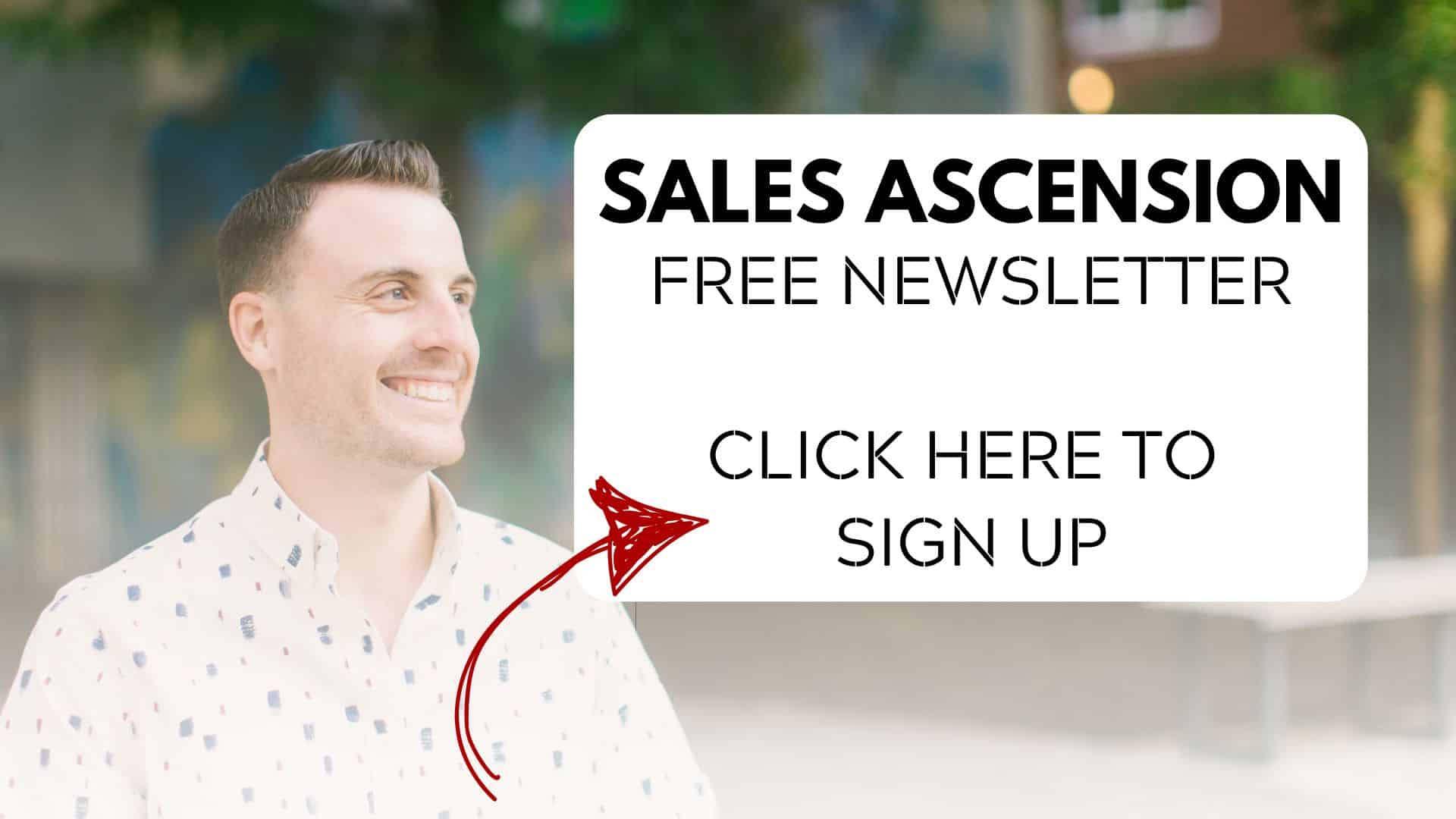Many businesses have opportunities to make decisions that will generate near-immediate cash flow. However, the carelessness of these decisions can lead to a sinking ship. Use this as a loose guide to determine if you have an opportunity to profit quickly.
One thing of note is that this guide is not relevant to pre-revenue businesses or startups. This requires an active customer/client base to work and knowledge of the view of your current product or service offering.
When you look at a customer value journey (CVJ), you’re experiencing a path from when someone has no idea of your existence to generate some interest, ultimately buying, maybe buying more, and hopefully creating customers via an affiliate or referral program. The pillar we need to break down today is getting a customer to buy more. So they already have to have purchased something from you.
Step 1: Your Value Ladder
First, you need to list all your products and services. How do you organize them? Generally, certain products need to be purchased before moving to the next option. In marketing, we call this a value ladder.
An easy way to do this is by tiers. So tier 1 is the first thing someone buys from you – a $5 document, ebook, or something else of immediate value that will overdeliver. Tier 2 would be the next. Remember that you might have more than one product or service in each tier. An example is if you have different membership options like Silver, Gold, and Platinum at $27, $47, and $97/mo, respectively. Tier 3 could include any immediate upsells on those memberships. Tier 4 could be a Mastermind play at a higher price of $25k/yr. Tier 5 could be complete DFY (done for you) services at $7500/mo with a 3-month commitment, and on and on and on.
Note: This is not the time for new ideas. This step is only to outline what you already have. If the wheels turn, that’s a good thing, but don’t act yet.
Reexamine your value ladder. Some business owners might realize they only have one tier. Maybe some have two. Maybe others have 5. More tiers aren’t necessarily better, but I have good and bad news if you have one. You’re in the realm where you’re missing out on considerable profit, but you’re also able to make an offering to make money immediately. If you have more than one tier, you’re not out of the running yet.
Once you have finalized the value ladder, write the product/service cost next to each item if you haven’t already.
Step 2: Numbers and Conversions
This is where most business owners will fall off the map. Admittedly, this can be a frustrating step for a couple of reasons:
You might realize you don’t know as much as you should about your business.
You might have to do some light calculations.
Using the value ladder you wrote in step 1, identify conversion rates and the number of clients in each tier. The ground rules for this part are: don’t be discouraged by low numbers and percentages – those are opportunities, and make sure the data you’re using is sound. If you need to check with your head of marketing, or someone else on your team, do it.
If you don’t have your data in a centralized place that’s easy to access – this is your sign to make that happen.
Next, in Tier 1, you might have 10,000 customers. That’s all you need. On Tier 2, you might have 3500. You would write 3500 and a 35% conversion rate. Tier 3 – 500 (14.3%). Continue this until it’s complete.
As already stated, don’t worry about the numbers. Just write them honestly. Besides, right now, you’re the only one looking at it.
Note: If you only have one tier, you simply need to write the number of customers.
Step 3: Analyze The Data
Now it’s time to start analyzing the data. Are there any immediate red flags? Do you have any goose eggs or unacceptable percentages? These are indicators that there are opportunities to improve your offerings.
One of the hardest things in business is attaining customers. If you have generated a customer, getting that person to buy more things is much easier than getting someone who never bought anything to get into Tier 1. That’s a principle and not a marketing law – there could be exceptions, but you’re likely not one of them.
This means that if you have a base of customers on Tier 1, congrats. You have a solid hook to bring customers in the door, and your offering resonates with people. If you’re a B2B business, do not be discouraged by my use of the terminology “people.” A typical marketing shortcoming is believing that B2B businesses market to companies. That is incorrect. People make purchasing decisions, not corporations. This guide is valuable no matter the industry, and it does not discriminate.
Getting back on track, your marketing hooks matter less to your preexisting customer base. It’s not irrelevant, but what matters more is the relevancy of your product offering. Are you creating natural stepping stones for that customer to grow with you, or are your products and services too unrelated? As you look at the gaps in your percentages, you might notice a correlation that you do great going from Tier 1 to Tier 2 because it’s a natural ascension. But Tier 3 is converting poorly. You’re wondering if it’s price, but maybe, the progression isn’t innate.
It’s also vital that progression isn’t forced because you believe you’re “smarter” than your customer. If it’s not being purchased, you’re missing something.
Step 4: Natural Progression Steps
By now, you see where this is going. If you’ve only had one tier this whole time, then welcome back. If you have more than one, this is where the fun begins.
Somewhere separate from where you wrote or typed your value ladder, you need to develop the natural progression steps of your customer based on your current beliefs. This is NOT a representation of your value ladder. This is something different. It’s crucial to separate yourself from the value ladder you have.
Pro tip: take a lunch break, meeting, or even a day before you complete this step. A fresh perspective after letting your brain process the natural progression of your customer is imperative to succeeding in this guide.
Step 5: Comparison
Compare Step 4 to your value ladder. Does each stage line up perfectly with your offering? If so, congrats – you’re a unicorn! Also, your numbers and percentages should reflect that, and your business should be a well-oiled machine. If the numbers don’t reflect the adoption of each tier within a reasonable conversion rate, then you need to redo step 4 and connect with your customer base more.
Now, if the exercise in Step 4 does not align with your value ladder, you’re the real winner. If you’re missing steps, or the progression is simply different from your product or service offering, this is where you get to tweak what you’re doing.
This stage can create lots of problems. The goal here is not to encourage you to redo your entire business. The purpose of this exercise is to focus on quick wins. You’re not finished yet, and if you walk away from this based only on what has been revealed, it could mean dire consequences, i.e., business-killing decisions.
Step 5 is done once you have compared and identified differences. This is a simple stage, yet a critical one.
Step 6: Identify Quick Win Opportunity
Now that you’re familiar with your value ladder, conversion percentages, and the natural customer/client progression you created in Step 4, you can identify your quick win opportunity.
Add or rework one stage in your value journey to succeed. In 90% of cases, you want to work with your lowest tier that DOES NOT match your customers’ natural progression to make the change. This is due to two reasons:
It’s simple risk management. By only changing one stage, you’re not changing your whole business model, and it can be scratched if you screw up, and
Utilizing the lowest tier allows you to test this new offer with the maximum number of customers.
Remember, you’re not offering Tier 4 to everyone whose in Tier 1, only to people in Tier 3.
Step 7, Optional: Team Feedback
If you have a team, this is the time to communicate with key decision-makers and trusted advisors on whether to generate a new offering based on your findings and why.
Be open to a dialogue, but also be willing to explain the process you went through and understand that if you did this guide correctly, you’re using data to back up your plan.
Step 8: Finalize Your Offer
Finalize your offer and plan a launch strategy with anyone involved in the marketing process. This could include email, SMS, and retargeting ads if you have your customers properly segmented and able to target.
Then, LAUNCH!
Final Thoughts
Don’t become overly attached to every step. Sometimes, even when following proven processes, we miss. Marketing is, in reality, a big test. Many people don’t want to accept it, but it’s true. Sure, you can focus on your growth from a social media channel today, but what happens when the algorithm changes tomorrow and your traffic from that source is down 50%? Well, it’s a simple answer, you’re going to see a 50% drop in new customers.
It’s always wise to aim for predictable sales that you can control. The best way to do this is to work with your internal customer base. It takes time to master this process, but if you do, it could be the difference between 10% and 50% or more growth.
The best part is if you’re data is centralized, this entire process can be done in less than two hours.
And I know you’re thinking, “What about the landing pages, emails, automations, and on and on and on.” You don’t need to be fancy when marketing to your internal customer base. You need to be helpful and direct. Your whole campaign can be an email with an SMS:
Step 1, Send SMS: John, I’m about to send you an email. Let me know your thoughts when you get it. -Steve
Wait 2-5 mins
Step 2: Send Email: John, thanks for taking the time to look at this. I was reviewing your progress and realized that you might need a way to diversify your portfolio with an expert on the team. Would that be helpful to you?
Let me know,
Steve
Now, you’re opening the door to a conversation. The offer could be one of two things in this scenario. It could be an in-depth call 1-on-1 reviewing their portfolio for a price that would be fair and would bring in a significant bump to their earnings. It could also be an overview call touching on some high-level pieces, ultimately selling them to a high-ticket offer.
The great thing about this process is that it’s natural, and you’re positioning yourself as the expert to provide the client with what they want: more money.
Of course, you could beef this up with follow-up emails, an RVM (ringless voicemail), etc. But don’t overdo it. You don’t always need a fancy landing page. Also, stop doing that thing where you include your calendar in the first email. Make them respond. Let the conversation happen. Conversational marketing is a relatively low-committal strategy to implement. A VA could easily handle responses to a campaign like this.
Be simplistic, be specific, and know your data. Let me know how much this strategy makes you after seven days. I’m curious.

